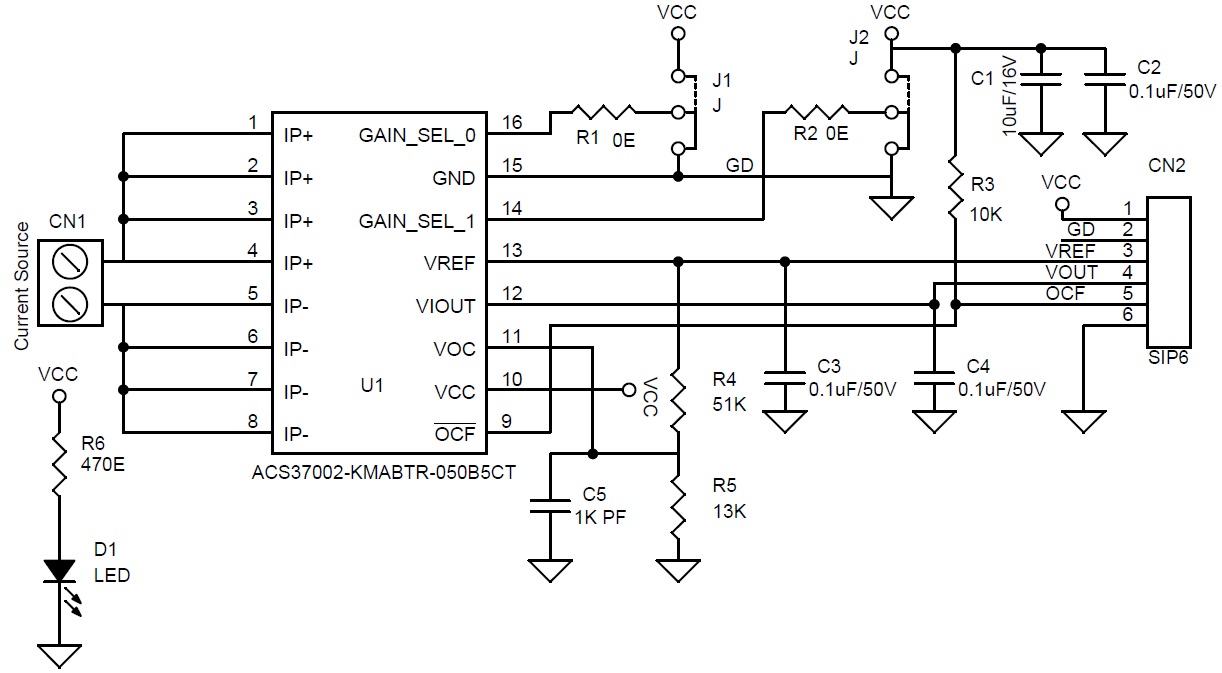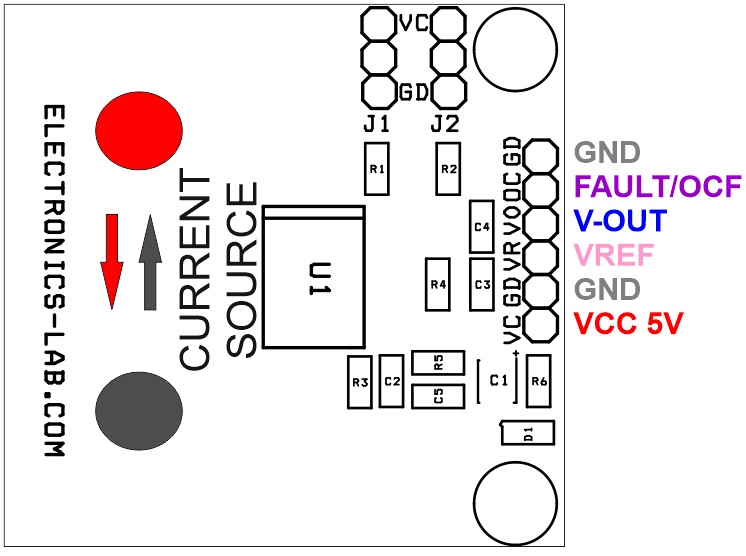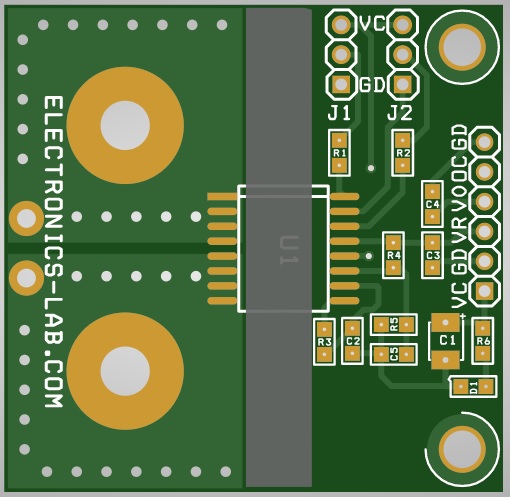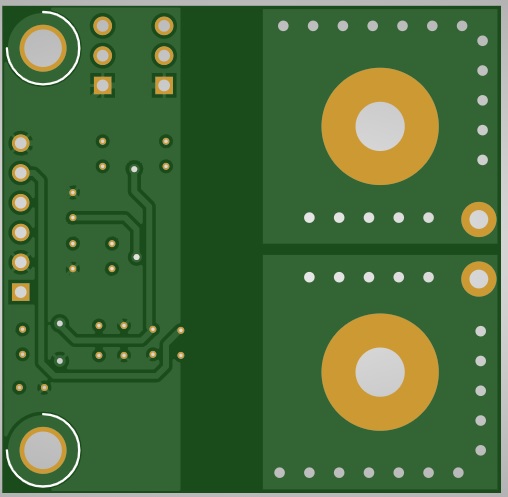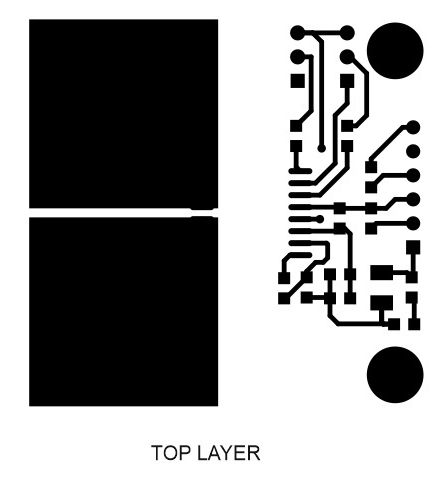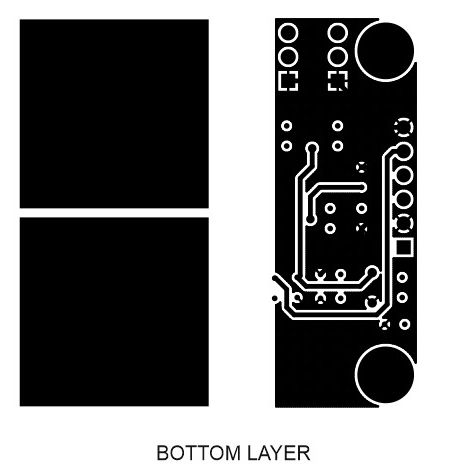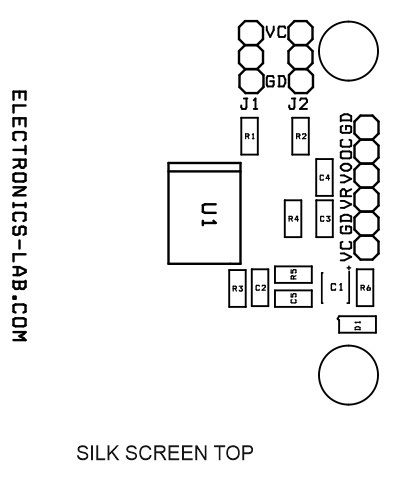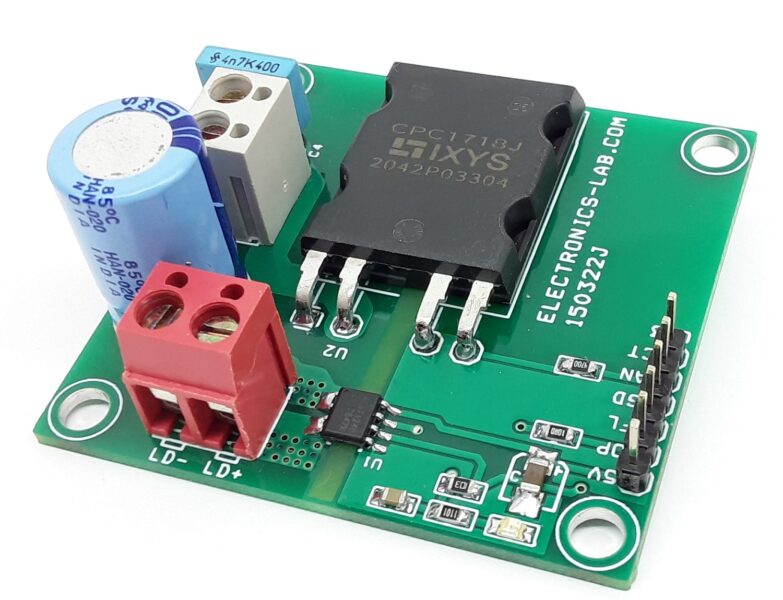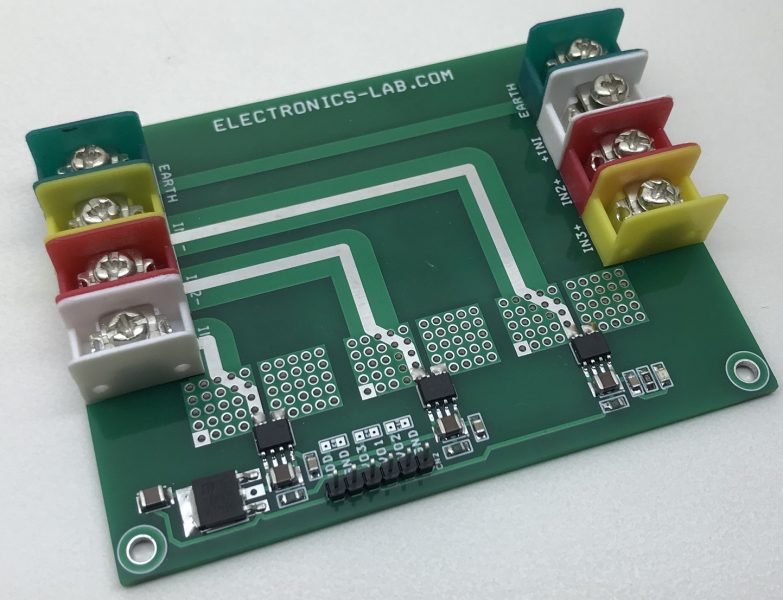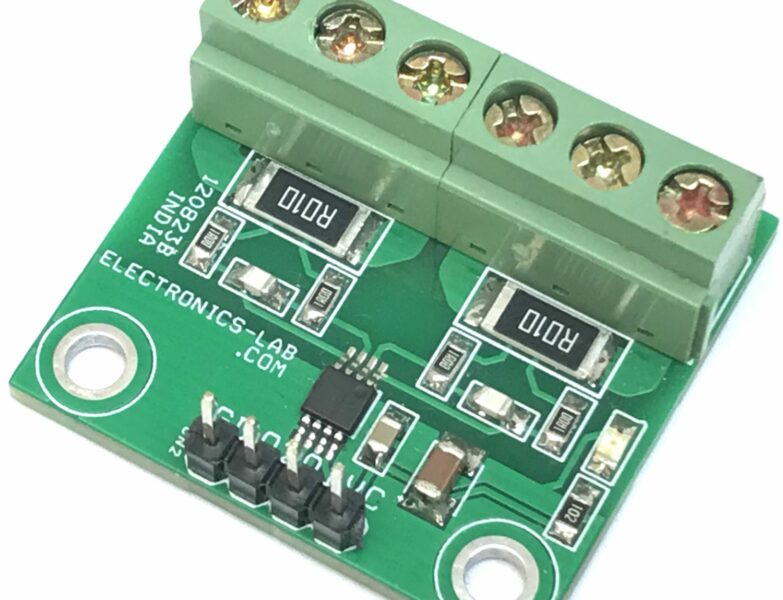High Accuracy Current Sensor with 400Khz Bandwidth using ACS37002
This is a high accuracy current sensor project build using ACS37002 IC from Allegro, which is a fully integrated Hall-effect current sensor with 0.85mOhms integrated conductor. A fast overcurrent alert output, programmable gain settings and analog linear voltage outputs are key features of this project. The sensor has optimized accuracy for current ranges +/-33A to +/-66 A and the analog voltage output is linear for the current of this range. The operating voltage of the project is 5V DC. The output voltage of this sensor is centered at VCC/2 =2.5V. Output sensitivity depends on the jumper settings, please refer to the table below for sensitivity/Gain configuration. CN2 6-pin header connector provided for power input and outputs. D1 is the power LED. Overcurrent alert is set to a minimum but it can be set as per user requirement by changing resistor divider R4 and R5, more information provided below.
Connector CN2 Connections Details
- Pin1=VCC 5V DC
- Pin2=GND
- Pin3= VREF 2.5V For ADC (Can be used for Microcontroller Interface Left Unused for Stand Alone Use)
- Pin4=Sensor Voltage Output
- Pin5= Over Current/Fault Output
Connector CN1 = Current Source Connections (Use 5 mm Ring Terminal with 4 mm Screws and Nuts)
Features
- Operating Supply 5V DC
- Output-VO 40mV/A, 50mV/A, 60mV/A, 30mV/A (50A,40A,33.3A,66.7A)
- Four Configurable Gain Settings Using Jumper J1, J2
- Adjustable Fast Over Current Fault 1us Response Time
- Over Current Output Normally High Goes Low @ Fault Condition (OCF)
- High Operating Bandwidth for Fast Control Loops
- 400Kz Frequency Bandwidth, 2us Response Time
- Very Low Sensitivity Error 1%
- 6mV Maximum Offset Voltage Over Temperature
- PCB DIMENSIONS 42.55 X 41.59 mm
ACS37002: 400 kHz, High Accuracy Current Sensor with Pin-Selectable Gains
The ACS37002 is a fully integrated Hall-effect current sensor in SOICW-16 package that is factory-trimmed to provide high accuracy over the entire operating range without the need for customer programming. The current is sensed differentially by two Hall plates that subtract out interfering external common mode magnetic fields. The package construction provides high isolation by magnetically coupling the field generated by the current in the conductor to the monolithic Hall sensor IC which has no physical connection to the integrated current conductor. The MA package is optimized for higher isolation with withstand voltage, 4.8 kVRMS, and 0.85 mΩ conductor resistance. The LA package is optimized for lower noise with 3.6 kVRMS withstand voltage and 1 mΩ conductor resistance. The ACS37002 has functional features that are externally configurable and robust without the need for programming. Two logic gain selection pins can be used to configure the device to one of four defined sensitivities and corresponding current ranges. A fast overcurrent fault output provides short-circuit detection for system protection with a fault threshold that is proportional to the current range and can be set with an analog input. The reference pin provides a stable voltage that corresponds to the 0A output voltage. This reference voltage allows for differential measurements as well as a device-referred voltage to set the overcurrent fault threshold.
Overcurrent Fault (OCF)
As the output swings, the Overcurrent Fault pin will trigger with an active low flag if the sensed current exceeds its comparator threshold. This is internally compared with either the factory programmed thresholds or via the VOC voltage when VVOC > 0.1 V. This flag trips symmetrically for the positive and negative OCF operating point. The implementation for the OCF circuitry is accurate over temperature and does not require further temperature compensation as it is dependent on the Sens and VOFF parameters that are factory-trimmed flat over temperature.
OVERCURRENT FAULT OPERATING RANGE/POINT (IOCF-OR, IOCF-OP)
Overcurrent Fault Operating Range is the functional range that the OCF thresholds can be set in terms of percentage of full-scale output swing. The Overcurrent Fault Operating Point is the specific point at which the OCF trigger will occur, and is set by either VVOC or the factory default setting. The IOCF-OP can be seen in Figure 13 as [9] along with the FAULT pin functionality.
VOLTAGE OVERCURRENT PIN (VOC)
The fault trip points can be set using the VOC pin as the direct analog input for the fault trip point. The VOC pin voltage can be set using R4, R5 resistor dividers from VREF on bidirectional devices. The fault performance is valid when VVOC is within the VOC Operating Voltage Range or <0.1 V. The device will respond to voltage outside of the defined valid performance region with varied results. For a 5 V bidirectional device, setting the VOC pin to 0.5 V selects the minimum trip point, IFAULT (min), and setting the pin to 2 V selects the maximum trip point. Project is set to default minimum I trip point 0.5V, Calculate the Value of R4 and R5 to set the trip point between 0.5V to 2V.
The resulting equation for the fault is:
OCF%FS [%] = VOC(VCC) [V]/VOC(VCC)100% [V] × 100 [%] IOCF [A] = OCF%FS [%] × IPR [A]
VOC- Pin11 Of Chip, thresholds and corresponding percentage of the full-scale output (Fault Operations Point % FS), Can be set using R4, R5 Resistors
<0.1V=100% Factory Default, 0.5V=50%, 0.75V=75%, 1V=100%, 1.25V=125%, 1.50V=150%, 1.75V=170%, 2V=200%
Schematic
Parts List
Connections
Jumper Configuration
Gerber View
Photos
Video



